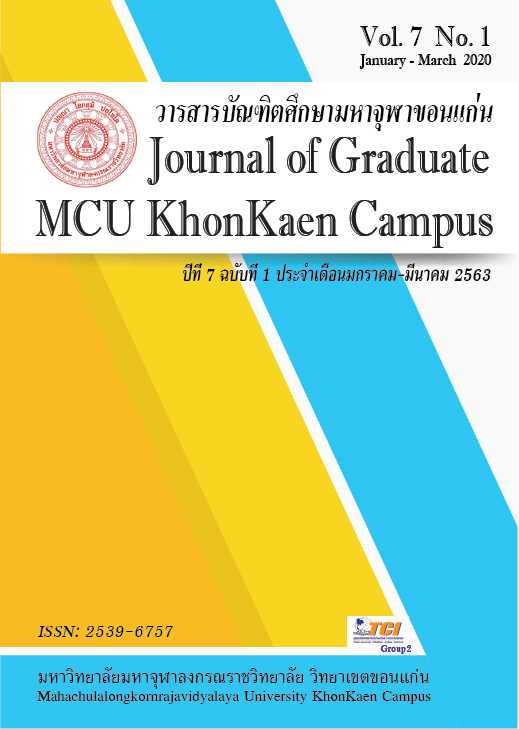AN ANALYSIS OF BUDDHIST ETHICS AS SHOWN INDHAMMACHAKKAPAVATTANA SUTTA
Main Article Content
Abstract
This research With 3 objectives which are 1. To study concepts Buddhist ethics theory 2. To study the history and materials in Thamachakapawathaputasut 3. In order to analyze Buddhist ethics as shown in Thamachakapavathu Sutra Is a documentary research aimed at studying the analysis of Buddhist ethics that appears in the Dharmakapavathaputra Sutta and then analyzing the data using inductive methods
1. Conceptual theory of Buddhist ethics It is the concept that the Lord Buddha is an enlightenment, an awakened, cheerful person. Behavior is a manner that should be treated as a standard of human behavior. For human beings to live a good life, to be a perfect human being, with wisdom, and complete
happiness Resulting in physical and mental happiness Buddhist ethics is a matter of refraining from evil. And focus only on the basic physical and verbal good things and to the highest level in order to reach the path and nirvana.
- Dhammachakkapavattana Sutta is the first sermon that the Lord Buddha performed to the Punjabani in the forest of Somdet Phra Marukkhathaiyawan. With the essence of the two extreme ways, namely “Kamasukulikanukyok” (obsessed in the erotic) and “Atakili Thananok” (the torture of himself in vain) which Is for suffering and presents the middle path for the good life and achieve the highest goal, Nirvana
3.Analysis of Buddhist ethics as shown in Dhammachakkapavattana Sutta It is found that Buddhist ethics appearing in Dhammachakkapavattana Sutta is a high level of Buddhist ethics, such as the Noble Truths 4 (suffering, Somuthai Niharotaka) whose activities are in the Three Noble Truths, namely the Truths (Knowing what the truth is). (Knowing how to handle it), Wise (know how to deal with it) and Mak has 8 elements that are used as tools for self-development. To end suffering and achieve Nirvana

